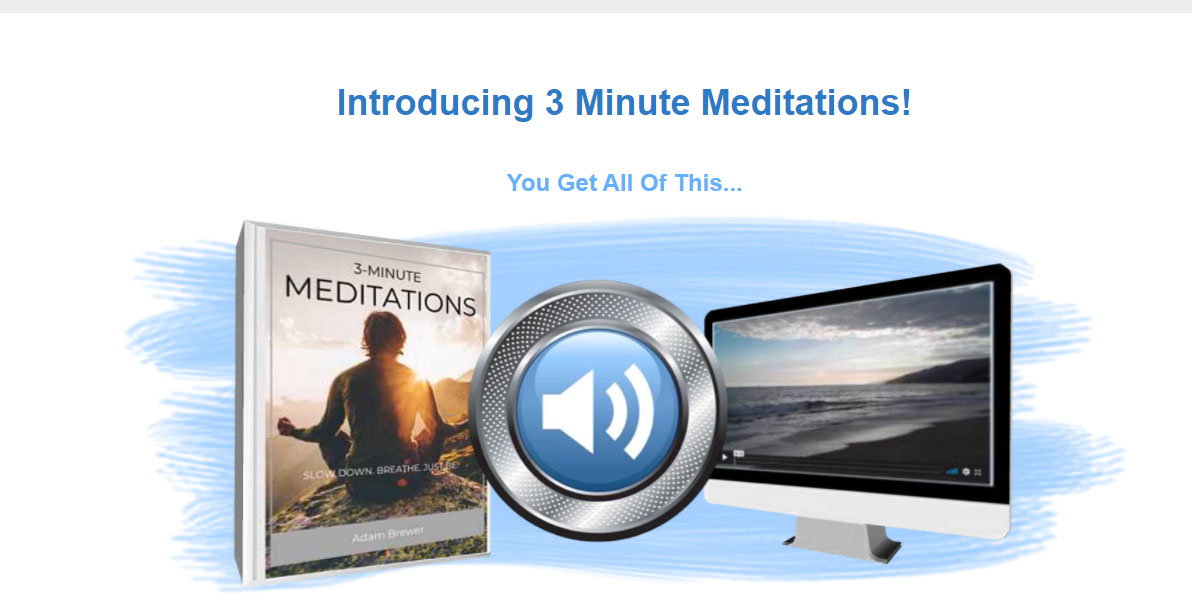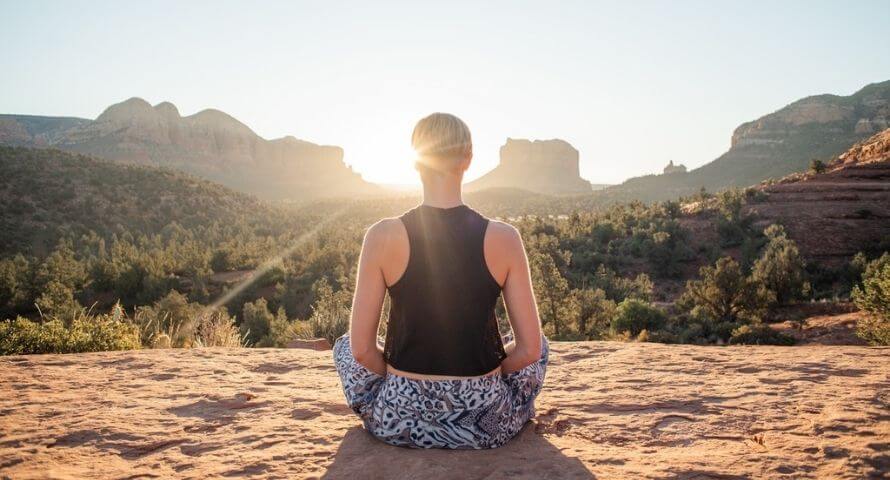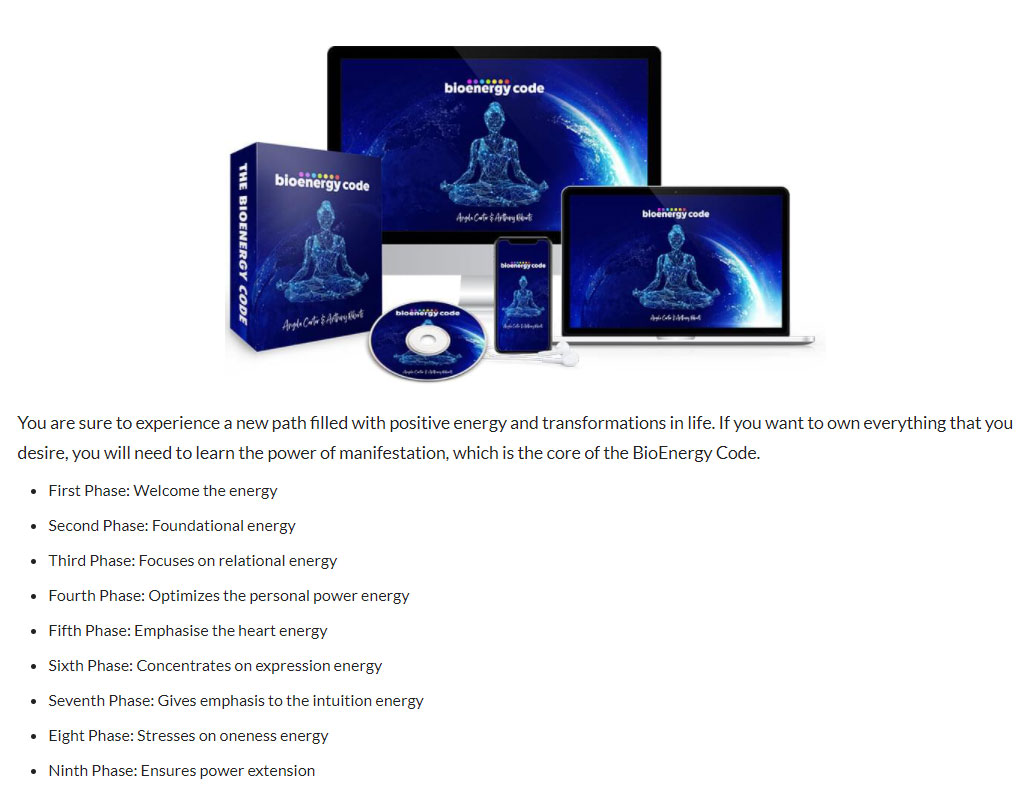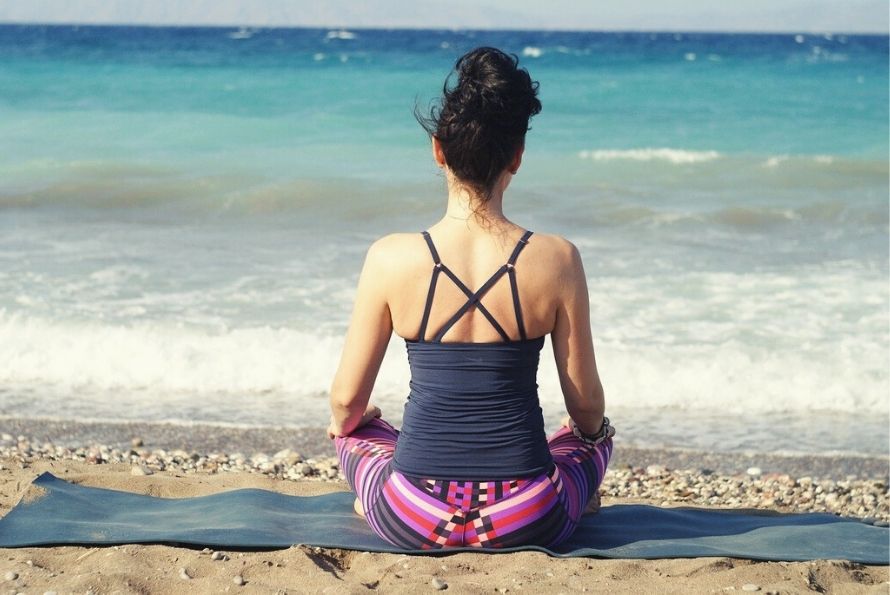Meditation and mindfulness
How to meditate in mindfulness? Discover all the secrets of mindfulness meditation! In this article we will explain how to meditate and why practicing this discipline is good for you.
What is mindfulness?
Mindfulness is the basic human ability to be fully present, aware of where we are and what we are doing, and not overly reactive or overwhelmed by what is happening around us.
Although mindfulness is something we all possess naturally, it is more easily accessible to us when we practice daily. Whenever you become aware of what you are experiencing directly through your senses or your state of mind through your thoughts and emotions, you are aware.
In addition, a lot of research shows that when you train your brain to be conscious, you are actually reshaping the physical structure of your brain. The goal of mindfulness is to awaken to the inner workings of our mental, emotional and physical processes.

What is meditation?
Meditation is a true exploration. It is not a fixed destination. Your head is not freed without thought, without distraction. It is a special place where every moment is important.
When we meditate, we venture into the workings of our mind:
• Our sensations (air blowing on our skin or a strong smell floating in the room)
• Our emotions (love this, hate that, want that, hate that)
• Our thoughts (wouldn't it be weird to see an elephant playing a trumpet)
Mindfulness meditation asks us to suspend judgment and release our natural curiosity about the workings of the mind, approaching our experience with warmth and kindness, towards ourselves and others.
How to practice mindfulness?
Full consciousness is at our disposal at every moment. Whether it is through meditations and body analysis, or mindfulness moment practices such as taking time to pause and breathe when the phone rings instead of rushing to answer it.
Mindfulness helps us to put a space between us and our reactions, breaking down our conditioned responses. Here's how to be mindful throughout the day:
1/ Book time
The ideal is to have a meditation cushion or bench, or any kind of special equipment to access your mindfulness skills, but most importantly, you must set aside time and space.
2/ Observe the present moment as it is
The purpose of mindfulness is not to soothe the mind or to try to reach a state of eternal calm. The goal is simple: it is to pay attention to the present moment, without judgment. Easier said than done, we know.
3/ Let yourself be guided by your judgments
When we notice that judgments occur during our mindfulness practice, we can mentally note them down and let them pass.
4/ Return to the observation of the present moment as it is
Our mind often gets carried away by thought. That is why mindfulness is a practice of returning, again and again, to the present moment.
5/ Be kind to your wandering mind
Don't judge yourself for the thoughts that come up, just practice recognizing when your mind has gone astray and gently bring it back.
This is practice. It's often said that it's very simple, but on closer inspection it's not necessarily easy. The job is simply to keep doing it regularly, and then the results will accumulate.

Mindfulness in your daily life
When you practice mindfulness meditation, it helps you find ways to integrate mindfulness into your daily life, especially on days when life is too busy to spend a minute alone.
Mindfulness meditation is a technique, but daily activities and tasks offer many opportunities to practice mindfulness.
Every time you focus your attention on the present moment and whatever you do, you are practicing being aware. Not only does this enrich the experience of the present moment you are engaging in, but it also allows you to be present in your own time rather than going back to the past or the future.
• Brushing your teeth : Feel your feet on the floor, the brush in your hand and your arm going up and down.
• Washing dishes: Enjoy the feel of warm water on your hands, the look of bubbles and the sound of pots and pans clattering at the bottom of the sink.
• Doing laundry: Pay attention to the smell of clean clothes and the feel of fabric. Add an element of concentration and count your breaths as you fold the laundry.
• Driving: Turn off the radio or put on something soothing, like classical music, imagine your spine growing, find the mid-point between relaxing your hands and squeezing the wheel too hard, and whenever you notice your mind wandering, pay attention to where you and your car are in space.
• Exercise: Instead of watching TV on the treadmill, try to focus on your breathing and the position of your feet in space when you move.
• Get your children ready for bed: Get on the same level as your children, look into their eyes, listen more than you talk, and enjoy cuddling. When you relax, so will they.

How to meditate?
Mindfulness meditation focuses on the breath, not because there is anything special about it, but because the physical sensation of the breath is always there and you can use it as an anchor in the present moment.
Throughout the practice, you may find yourself caught up in thoughts, emotions, sounds. Wherever your mind goes, simply return to the next breath.
Meditation practice
1/ Sit comfortably: Find a place that offers you a stable, solid and comfortable seat.
2/ Place your legs: If you are on a cushion, cross your legs comfortably in front of you. If you are on a chair, place the soles of your feet on the floor.
3/ Straighten your upper body: Without stiffening you, your spine has a natural curvature so keep it up.
4/ Place your arms: Place your upper arms parallel to your upper body. Place the palms of your hands on your legs where it feels most natural.
5/ Relax your gaze: Lower your chin a little and let your gaze fall gently downwards. It is not necessary to close your eyes. You can simply let what appears in front of your eyes be there without focusing on it.
6/ Feel your breath: Draw your attention to the physical sensation of breathing: the air flowing through your nose or mouth, the upward and downward movement of your stomach or chest.
7/ Feel when your mind moves away from your breathing: Inevitably, your attention will leave your breath and wander to other places. Don't worry. There is no need to block or eliminate the thought. When you notice that your mind is slowly wandering away, turn your attention back to breathing.
8/ Be kind to your wandering mind: You may find your mind wandering, that's also normal. Instead of struggling with your thoughts, practice observing them without reacting. Sit still and pay attention. Even if it's hard to maintain, that's all there is to it. Keep coming back to your breath, without judgment or waiting.
9/ When you are ready, gently raise your gaze (if your eyes are closed, open them) : Take a moment and notice the noises in the environment. Notice how your body is feeling right now. Note your thoughts and emotions.

What are the benefits of practicing mindfulness meditation?
Of course, when we meditate, it is not helpful to focus on the benefits, but rather to simply do the practice. That said, the benefits are many. Here are five reasons to practice mindfulness:
Understand your pain
Pain is a fact of life, but it doesn't have to rule you. Mindfulness can help you reshape your relationship with mental and physical pain.
Connect better
Have you ever found yourself looking at a friend, a lover, a child without having any idea what they are saying? Mindfulness helps you give them your full attention.
Reduce your stress
Nowadays, it is proven that excessive stress causes many illnesses and aggravates others. Mindfulness reduces stress.
Focus your mind
It can be frustrating to see our mind drift away from what we are doing and be pulled in six directions. Meditation refines our innate ability to focus.
Reduce brain chatter
The chattering voice in our heads seems to never leave us alone. Isn't it time we gave it a little break?
Why practice mindfulness meditation?
Some of the most popular ideas about mindfulness are simply wrong. When you start practicing it, you may find the experience very different from what you expected. Chances are you will be pleasantly surprised.
Let's set the record straight about these 5 things that people get wrong about mindfulness:
• Mindfulness is not about "fixing" yourself.
• Mindfulness is not about stopping your thoughts.
• Mindfulness does not belong to any religion.
• Mindfulness is not an escape from reality.
• Mindfulness is not a panacea.
Mindfulness is more than just reducing stress:
Stress reduction is often an effect of mindfulness practice, but the ultimate goal is not supposed to be stress reduction. The goal of mindfulness is to focus on the inner workings of our mental, emotional and physical processes.
Mindfulness trains your body to blossom:
Whether it's basketball players training to accept negative thoughts before games, cycling champions learning to follow their breath, or big wave surfers transforming their fears. Soccer player Erling Haaland is also a lover of this practice, known to celebrate his goals by imitating the meditating position of Buddha. These athletes learn a mixture of mindfulness, which they call tactical breathing, cognitive and behavioral training to promote what they call "full presence and conviction in the moment".
Mindfulness stimulates creativity:
Whether writing, drawing or coloring, they are all accompanied by meditative practices. We can also apply mindfulness to the creative process.
Mindfulness strengthens neural connections:
By training our brain in mindfulness and associated practices, we can build new neural pathways and networks in the brain, stimulating concentration, flexibility and awareness. Wellness is a skill that can be learned. Try this basic meditation to strengthen neural connections.

Common questions about mindfulness meditation
Is there a wrong way to meditate? A good way to meditate?
People think that they make mistakes when they meditate because of the occupation of their mind. But getting lost in your thoughts, realizing this and returning to the object of meditation you have chosen, whether it is breath, sound, body sensation or whatever, that is how it happens. That's about it. If you do this, you're doing it right!
Are there more formal ways to practice mindfulness?
Mindfulness can be practiced alone, at any time, or with like-minded friends. But there are other ways and many resources to tap into. Examples include mindfulness-based stress reduction, mindfulness-based cognitive therapy and other mindfulness-based training. Daily guided meditations are also available via smartphone apps, or you can practice in person at a meditation center.
Do I have to practice every day?
No, but since it is a beneficial practice, you may find that the more you practice it, the more beneficial you will find it for your life.
How do I find a meditation teacher?
If you want to make mindfulness a part of your life, you will probably want to consider working with a meditation teacher or mentor. You can even do this online using a video chat format, but even then, the same principles apply.
How do yoga and mindfulness work together?
There are a number of yoga postures that will help you in your mindfulness meditation practice.
Conclusion
Bring mindfulness into your daily lives to enjoy every moment. Try it in your next meditation sessions to see life differently.


